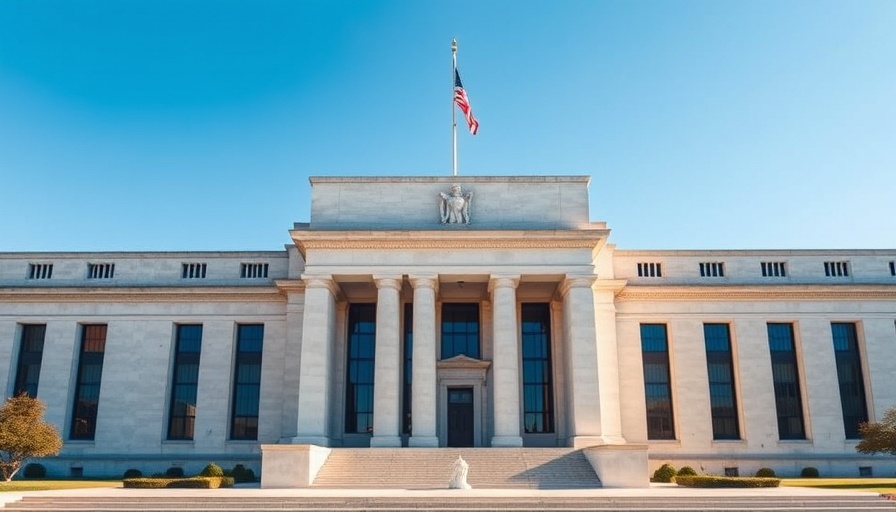
The Federal Reserve's Strategic Move Signals Economic Optimism
In a significant policy shift, the Federal Reserve (Fed) announced a 25 basis point cut to its key interest rate on December 18, 2024, bringing the rate down to 4.25%-4.5%. This marks the third consecutive reduction for the year, suggesting that the economy is in a position for growth. Fed Chair Jerome Powell expressed confidence in the state of the economy, stating, "We think the economy is in a really good place. We think policy is in a really good place." Despite this positive outlook, markets reacted negatively, reflecting a divergence between short-term investor sentiment and the longer-term economic fundamentals.
Understanding Interest Rate Cuts and Their Implications
Interest rate cuts are a tool employed by the Federal Reserve to stimulate economic activity by making borrowing less expensive. Lower rates can significantly impact various financing options, from business loans to credit lines. For businesses, this means enhanced access to capital for expansion, paying down existing debt, or investing in new projects. With the prime rate now at its lowest level since December 2022, companies are encouraged to seize the moment and capitalize on reduced borrowing costs.
Analyzing Market Reactions and Investor Sentiment
While the Fed's decision was well-received in terms of supporting economic growth, stock markets showed immediate volatility post-announcement. The S&P 500 index saw declines, highlighting a phenomenon where investor expectations may not align with economic realities. As Powell pointed out, the market's response can often be knee-jerk, driven by anticipations rather than fundamentals. For business owners, this serves as a reminder to focus on operational strategies rather than fleeting market sentiment.
Exploring Future Economic Trends and Predictions
Looking ahead into 2025, the Fed has modified its predictions for future rate cuts, now anticipating only one to two additional cuts rather than the previously projected three to four. This change suggests a cautious approach by the Fed as it assesses inflation trends and overall economic performance. Inflation, which remains above the 2% target, poses a challenge for the Fed, making its decisions more complex. Business leaders should prepare for a slowly evolving landscape as the Fed navigates these economic signals.
Benefits of a Lower Rate Environment for Business Growth
The current economic climate presents numerous opportunities for businesses, particularly in terms of funding. With capital becoming more affordable, businesses can explore a range of funding solutions, including commercial loans and equipment financing. Entrepreneurs thinking of starting a new venture can benefit from the lower costs associated with start-up funding, enabling smoother market entry. This period of lower interest rates offers a strategic advantage to pursue growth initiatives unhindered by excessive financial burdens.
The Outlook for Small Businesses and Financing Solutions
Small businesses, often the backbone of the economy, stand to gain significantly from these lower interest rates. Access to small business loans and other financing options such as business credit cards and invoice financing becomes more viable, enabling them to improve cash flow and invest in necessary resources. By understanding different financing solutions, including business expansion loans or working capital loans, small business owners can make informed decisions that align with their growth objectives.
Challenges and Considerations for Business Owners
Despite the positive implications of lower interest rates, challenges remain. Businesses, especially those operating with tight margins or under high debt levels, must remain vigilant. Inflation and economic uncertainties can affect profit margins, necessitating careful financial management. Keeping a close eye on the business loan approval process and maintaining a healthy business credit score will be vital for securing favorable financing terms in this evolving landscape.
The actions of the Federal Reserve, including recent rate cuts, reflect a commitment to fostering economic growth while being wary of inflationary pressures. Business owners should harness these conditions to explore funding options, refine their financial strategies, and prepare for a future where agility and informed decision-making are paramount.
As you navigate these changes, consider reviewing your funding needs and take advantage of available loans designed for sustained growth. Whether through business term loans or alternative business financing options, now may be the right time to invest in your organization’s objectives.
 Add Row
Add Row  Add
Add 



Write A Comment